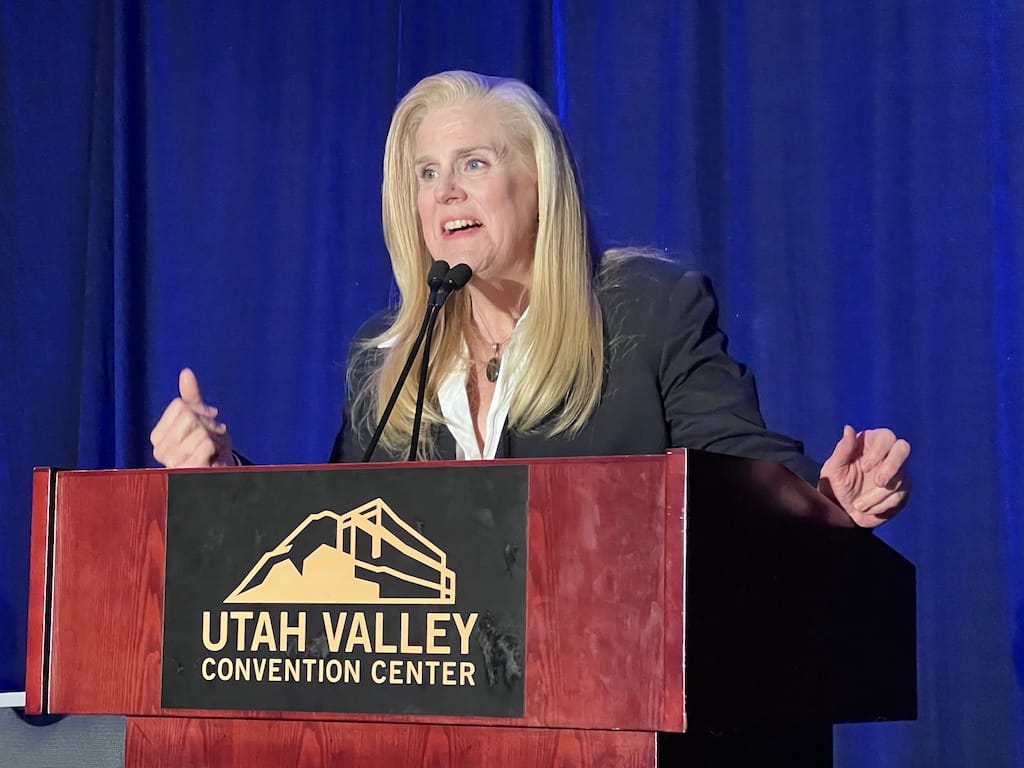Utah Releases Its State Broadband Plan for BEAD Funds, With Middle Mile Prioritization
The state’s unique fiber sharing model makes all the difference for middle mile builds, say Utahns.
Teralyn Whipple

PROVO, Utah, June 12, 2023 – Utah was the third state to release its digital equity plan and the five-year plan as part of the $42.5 billion Broadband Equity Access and Deployment program on Wednesday.
The state was awarded a $5.6 million planning grant in November for the development of statewide plans for deployment of high-speed internet and digital equity. The public comment period for the plans is open until July 6.
Louisiana was the first state to publicly release its five-year and digital equity plans in May. It received a $2.9 million planning grant in August. Maine released its plans on June 1.
Utah’s digital connectivity plan outlines the next steps that the state will take to identify and utilize public private partnership models and develop a middle mile prioritization strategy to reach all unserved and underserved areas of the state.
It identified the Utah Department of Transportation as a key agency for expanding middle mile in the state. UDOT’s management of state and federal rights-of-way makes its partnership critical for providers to close middle mile gaps, read the plan.
The plan also outlined plans for tribal consultations with the eight tribes within its borders to collaborate on broadband planning initiatives and implementation timelines. Several tribes received federal Tribal Broadband Connectivity Program funds which the Utah Broadband Center will provide technical assistance for.
Unlike Louisiana’s plan, Utah did not specify its plans to establish a challenge process for its state broadband map. Louisiana stated in its proposed plan that it will adopt the model challenge process as provided by the National Telecommunication and Information Administration.
Middle mile investment
Portions of BEAD funds can be used to invest in middle mile infrastructure provided it connects last mile infrastructure to end users. Utah anticipates using BEAD dollars to expand its middle mile network. The state has adopted a unique fiberoptic sharing model through its partnership with UDOT to build and operate middle mile infrastructure.
UDOT owns fiber optic networks along interstate highways to connect traffic cameras, road signs, weather stations and other sensors to its traffic operation center and provide instantaneous traffic updates. It partners with providers to access each other’s fiber lines, which allows for traffic operations and broadband service to expand.
The partnership “utilizes the pathways to reach the doorsteps of the communities that otherwise would have been cost-prohibitive,” read the state’s plan, outlining its intent to maximize the partnership with BEAD funds.
This unique partnership has made all the difference in Utah builds, said Nicole Cottle, board member of the Utah Infrastructure Agency, UTOPIA Fiber’s financial arm at an Internet for All event Wednesday. Middle mile is often the most difficult infrastructure to build and UDOT’s partnership makes it that much easier, she said.
The sharing model opens more funding opportunities to broadband because of its unique connection with transportation, added Lynne Yocom, fiber manager at UDOT. Federal programs intended to support transportation infrastructure can have cascading effects on broadband, she said.
She called the model the “Utah way” of partnering.
Digital equity plan
Utah established in its digital equity plan several goals that it will work to achieve with its BEAD allocations, set to be announced June 30. The first goal is community coordination and resource discoverability in which the state will establish long-term coordination with communities to manage a statewide network of practitioners to support capacity building.
The state will cultivate community training opportunities for Utah residents by providing funding for a digital navigator training program. It will work with universities and colleges to provide educational benefits and paid internships for digital navigators.
Utah’s state broadband office will ensure the longevity of its programs by prioritizing support for projects with a high likelihood of ongoing local investment. It will also maximize locally available resources by standardizing programs that recycle, refurbish and redistribute existing devices.
The plan is similar to Louisiana’s which focuses its efforts on how it will design future grant programs to prioritize access and affordability for covered populations by enlisting online resources, community centers, libraries, and other resources to promote and host events that educate communities on available programs.
ConnectLA will also provide funding to community anchor institutions to purchase laptops, tablets and hotspots to serve residents. Uniquely, Louisiana will create a publicly available digital equity dashboard that will track clearly defined access and affordability metrics such as service availability, speeds, and prices in unserved areas.








Member discussion